

Multi-dimensional Human Embryo, Stage 13. Multi-dimensional Human Embryo, Stage 17. The Multi-Dimensional Human Embryo. March 15, 2013 (Vol. 33, No. 6) URL: Rating:Strong Points: Easy to browse data, well organizedWeak Points: None Summary: A website whose name says it all, the Multi-Dimensional Human Embryo site offers visitors an in-depth view of human embryos at 10 developmental stages (ranging from postovulatory days 28–56).

UMVHP Links. Tools | Projects | Movies | News | Reports | Partners | Links | Personnel | Home / Search | Site Map About Us | Site Map |Contact Us | ©2009 The Regents of the University of Michigan.

Multi-dimensional Human Embryo Atlas. Sufi Links. Artificial Anatomy. Anatomy: Kapit, Wynn and Lawrence E.

Elson.The Anatomy Coloring Book. New York: Addison Wesley Educational Publishers, Inc., 1993. Petherbridge, Deanna and Ludmilla Jordanova. The Quick and the Dead: Artists and Anatomy. Berkley: University of California Press, 1997. MLibrary Digital Collections. Stem cell. Undifferentiated biological cells that can differentiate into specialized cells In mammals, roughly 50–150 cells make up the inner cell mass during the blastocyst stage of embryonic development, around days 5–14.
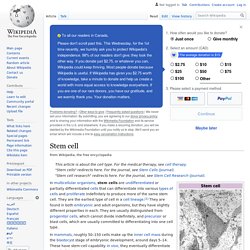
These have stem-cell capability. UM College of Pharmacy. Integrative approaches generate insights into the architecture of non-syndromic cleft lip with or without cleft palate. Summary Non-syndromic cleft lip with or without cleft palate (nsCL/P) is a common congenital facial malformation with a multifactorial etiology.
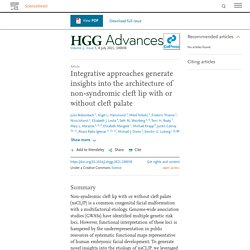
Genome-wide association studies (GWASs) have identified multiple genetic risk loci. However, functional interpretation of these loci is hampered by the underrepresentation in public resources of systematic functional maps representative of human embryonic facial development. Works Consulted - Internet Sources. Periodicals Andrew Richard Albanese, "Cyberspace: The Community Frontier," Library Journal , November 15, 2002.

Matt Apuzzo, "The $100,000 Virtual Police Officer," San Francisco Chronicle , July 21, 2003. The Green Building as a Medium for Environmental Education. Abstract As of 2012, green-building construction was among the fastest-growing industries in the United States.
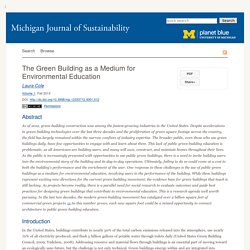
Despite accelerations in green-building technologies over the last three decades and the proliferation of green square footage across the country, the field has largely remained within the narrow confines of industry expertise. Free Medical Books. Multi-dimensional analyses identify genes of high priority for pancreatic cancer research. BioRxiv.org - the preprint server for Biology. What Happens When You Close the Door on Remote Proctoring? Moving Toward Authentic Assessments with a People-Centered Approach. Abstract The COVID-19 pandemic made traditionally proctored in-person exams impossible.
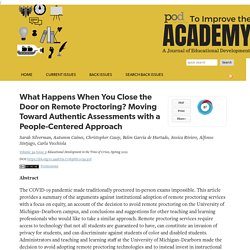
This article provides a summary of the arguments against institutional adoption of remote proctoring services with a focus on equity, an account of the decision to avoid remote proctoring on the University of Michigan–Dearborn campus, and conclusions and suggestions for other teaching and learning professionals who would like to take a similar approach. Artificial Human Embryos Are Coming, and No One Knows How to Handle Them. Yue Shao had never seen anything quite like it.
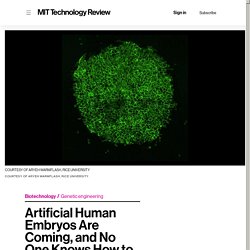
Two years ago, Shao, a mechanical engineer with a flair for biology, was working with embryonic stem cells, the kind derived from human embryos able to form any cell type. As he experimented with ways of getting cells to form more organized three-dimensional structures by growing them in scaffolds of soft gel, he was looking for signs of primitive neural tissue. What drew his attention was that the cells seemed to change much faster than expected—they arranged themselves rapidly over a few days into a lopsided circle.
What was it? Shao startled Googling to see if he could identify the structure.